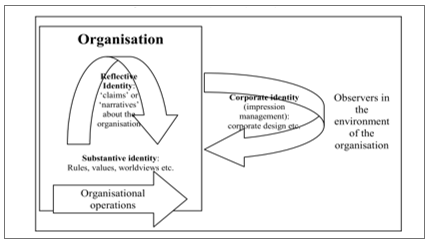Organisations, brand and technology: An introduction

Organisational brand identity reflects ‘who’ or ‘what’ the organisation stands for and represents. Various terminologies such as brand identity, branding, corporate identity or organisational identity are used interchangeably when discussing organisational identity. According to literature, discussions on organisational identity can fall into three groups – corporate identity (how companies portray themselves – through marketing, branding etc), substantive identity (unity and distinction of organisation), and reflective identity (organisational perception on their uniqueness and unity) (Seidl, 2005).
Significant cloud space is dedicated to discussions around brands, branding, logos and marketing. Brand identity represents how the brand and its unique identity is presented externally be it through logos, packaging or slogans (Doyle, 2016). Nevertheless, these above-the-surface aspects of identity only capture the tip of the iceberg. Enterprising organisations must be able to look at the beneath-the-surface aspects of brand dynamics such as the relational processes that occur within organisations (Brodie, Benson-Rea, & Medlin, 2017; Smith, 2010) to capture the underlying aspects that form identity.

Figure 1: Relationship between Corporate, Reflective and Substantive Identity (Seidl, 2005).
Technology specialists can play an integral role in being facilitators of identity creation and communications by providing infrastructure platforms that is easy to access and utilise both internally and externally and consistent with the identity of the organisation. Especially in an environment where we will find organisations increasingly operating in cloud based social environments technology provides the social platforms essential to create and sustain consistent organisational identities.
How do you envisage technological contributions towards creating consistent organisational identities? Share your views in the comments below or in Corporate identity group.
References:
- Brodie, R. J., Benson-Rea, M., & Medlin, C. J. (2017). Branding as a dynamic capability: Strategic advantage from integrating meanings with identification. Marketing Theory, 17(2), 183-199. doi:10.1177/1470593116679871
- Doyle, C. (2016). brand identity (4 ed.): Oxford University Press.
- Seidl, D. (2005). Organisational Identity: Routledge.
- Smith, S. D. (2010). The narrated brand : an exploration into how employee narratives construct the brand of a large service organisation.




Responses